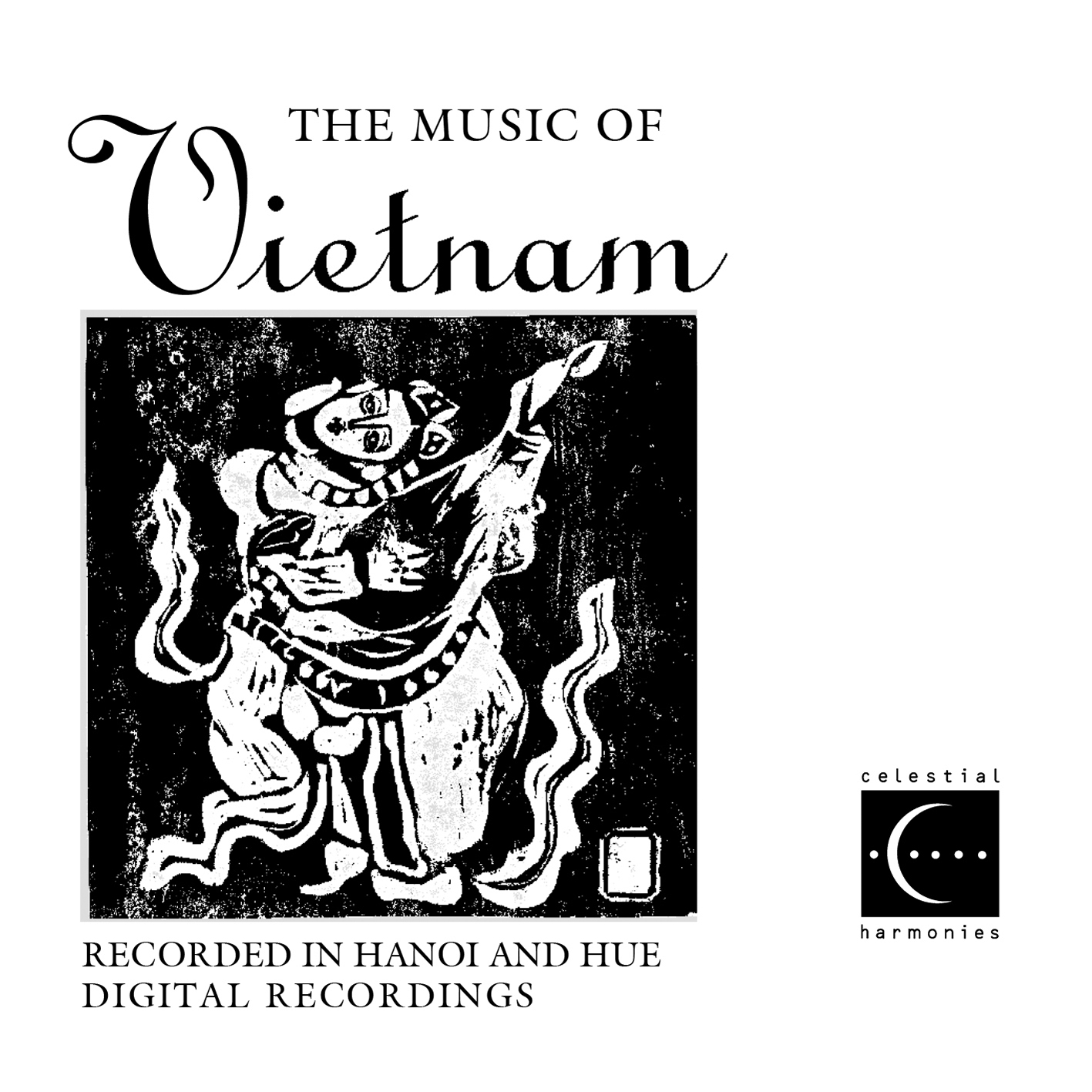
September 3, 1995
Old and new sounds of Vietnam

 19903 THE MUSIC OF VIETNAM
(3 CD BOXED SET) - VARIOUS ARTISTS
19903 THE MUSIC OF VIETNAM
(3 CD BOXED SET) - VARIOUS ARTISTS
Music is not a universal language. In music as in speech, there are
odd accents, strange sounds than can seem to unfamiliar listeners to
be so much garbled noise. To cultures that use instruments only in ones
and twos, a symphony orchestra can sound like a soul–less monstrosity,
incapable of communicating human emotions. To Euro–Americans, the
micro–tonal subtleties of Asian music can seem like tuneless noodling,
the polyrhythms of African music like an endless, boring drum solo.
That said, it is far easier to learn to appreciate music played in
a foreign style than to appreciate poetry in a foreign language. That
is because, as with painting, one can impose one's own aesthetic on
what one is hearing. One can enjoy African sculpture without knowing
anything about the culture that produced it, or lose oneself in a Ravi
Shankar sitar solo without understanding the intricacies of the raga.
These thoughts are the result of a week's immersion in Celestial Harmonies'
three–CD set The Music of Vietnam, several conversations
with experts on the Vietnamese tradition, a search for pictures of Vietnamese
instruments and, for comparison, a side trip to the label's companion
set from Cambodia. The Vietnamese set consists of a two–CD first
volume recorded in Hanoi with the top musicians of the Hanoi Conservatory,
and a single disc second volume of the court music of Hue, the country's
ancient capital. It has aroused the annoyance of some experts and yet
makes for very pleasant and interesting listening.
With the United States giving diplomatic recognition to Vietnam, it
is high time Americans began to think of it as a country and a culture
rather than a war zone. The music on these discs is a fine introduction
for outsiders, a richly varied tapestry of sounds that are unfamiliar
but by no means inaccessible. The first two discs are particularly appealing,
though the Hue recordings are more historically important.
The Hanoi Conservatory trains musicians in Western classical techniques
as well as the Vietnamese tradition, and the music they play varies
from quite pure local styles to a sort of classical fusion music. The
producers of this set argue that the Western influence is simply joining
a line of previous influences from China, India and elsewhere, and that
this constant borrowing and change, rather than diluting the tradition,
is its life's blood.
The instruments remain traditional, with some modifications, and range
from the relatively familiar (hammered dulcimer, xylophone and various
flutes and lutes) to the utterly strange. There is the dan bau, a one–string
instrument with a sort of bamboo "whammy bar" like that used
by rock guitarists, which gives it a fast and dramatic vibrato. The
k'longput is a set of wooden tubes of varying length which produce different
notes when the player claps his hands in front of them The k'ni is a
sort of fiddle with a wire going into the player's mouth, allowing him
to modify the sound by moving his lips.
The CDs are well programmed, balancing moody solo pieces with bright
ensembles. At first one is struck by the novel sounds, the swoops and
bends of the dan bau or the eerie tonal shifts of the lam kep, a bamboo
flute. Soon, though, there comes the pleasant shock of familiarity,
a snatch of music with the easily exotic flavor of an Asian film score
or a violin cadenza that sounds vaguely like Stephane Grappelli. These
draw the listener in until even the odder sounds begin to seem natural.
Phong Nguyen, a Vietnamese musician and ethnomusicologist at Kent State
University, sums up the pros and cons of the set. "As a listener,
I find these recordings pleasant to the ear," he says. "Though
as an ethnomusicologist I am not comfortable with them." His objection,
which is echoed forcibly by his colleague Terry Miller, is that the
CDs present themselves as a sweeping panorama of Vietnamese styles while
in fact they have only one style, that of the Hanoi Conservatory. The
musicians are young and have learned outside the traditional environment,
and their performances reveal an academic and somewhat Westernized sensibility.
Miller and Phong consider this a perfectly valid style, but by no means
representative of the Vietnamese tradition.
They are more impressed by the Hue ensemble which, though also made
up of young musicians, remains true to the old court style. True, it
has been kept alive mostly to perform for tourists and visiting dignitaries,
but it remains relatively close to its roots. The players demonstrate
less solo virtuosity than the Hanoi musicians but give an excellent
picture of what could be considered the area's ancient classical, or
court, tradition. The 17–member group includes vocalists, who are
largely missing from Volume 1, with traditional percussion, fiddles,
zithers, lutes and shawms (a relative of the oboe, misidentified in
the notes as clarinets).
Notes by the ensemble's artistic director give a history of the imperial
court and its performing arts, translations of the lyrics and descriptions
of the dances and their functions in ritual celebrations. While charming
and interesting (one dance, Female Generals Dispatching Their Troops,
celebrates the first century liberation of Vietnam by two sisters),
these notes are often confusing and give little information on the music
itself. By contrast, the notes to Volume 1 by WNYC radio "New Sounds"
DJ John Schaefer, are a clear and useful guide to the music and instruments.
Schaefer is not a world–class expert, but he is an astute listener
whose comments provide intelligent ways for a Westerner to approach
the music.
For those who want to hear a more traditional approach, Phong's "Eternal
Voices" (New Alliance) is highly recommended, or they can look
through the two dozen Vietnamese listings in the World Music Institute
Catalog ($2 from 49 W. 27th St., New York, NY 10001). "The Music
of Vietnam" is a good place to start, though. With 3½ hours
of lovely and fascinating music, it is probably the most accessible
set for those seeking an introduction to the music of a land most Americans
are intimately aware of but have never really known.
|



